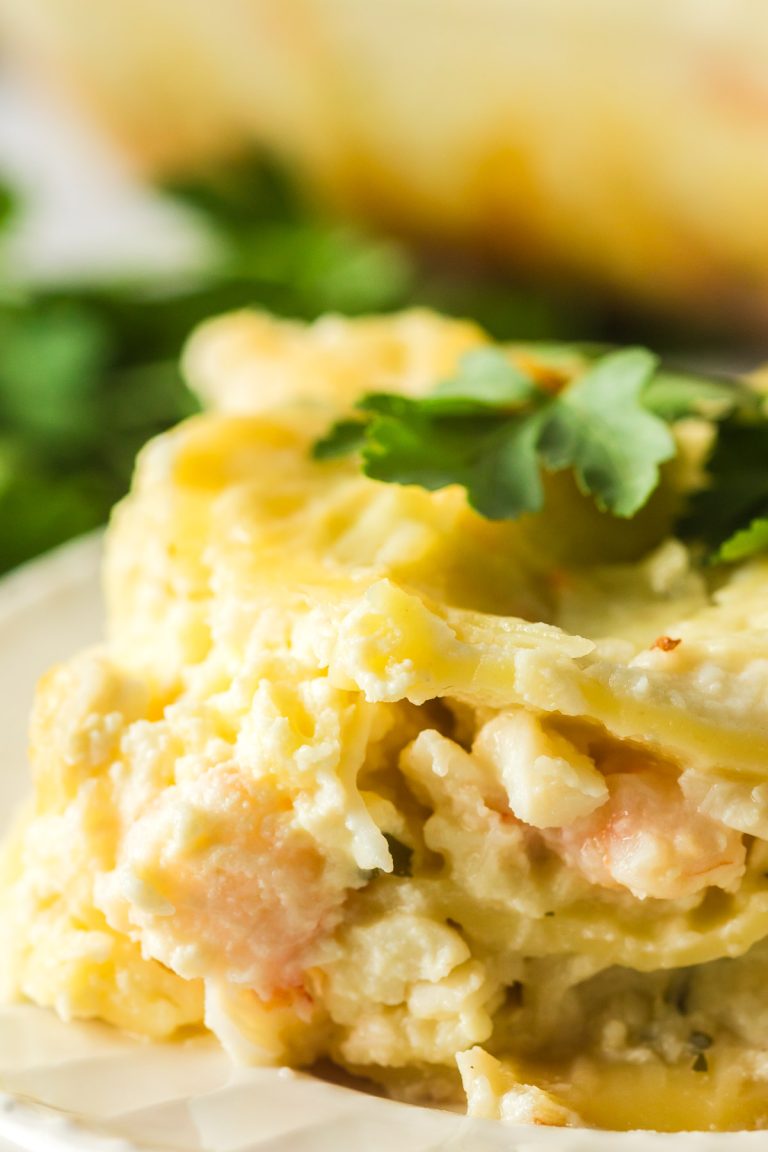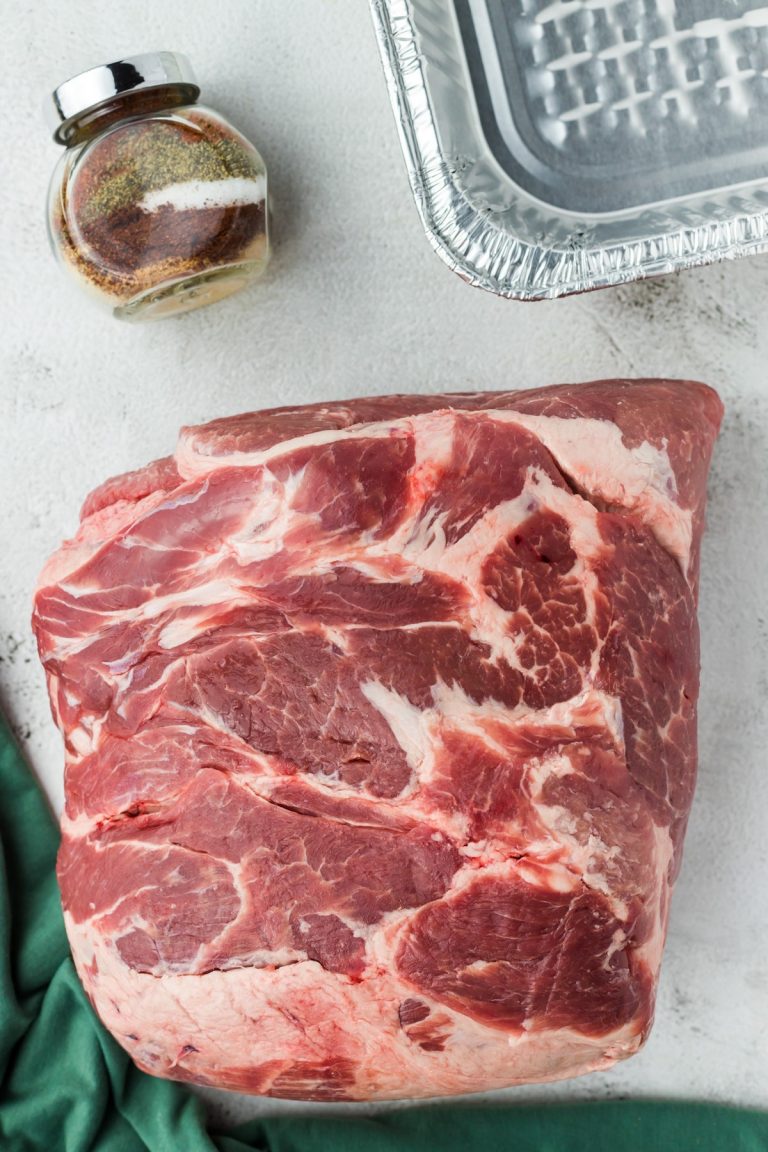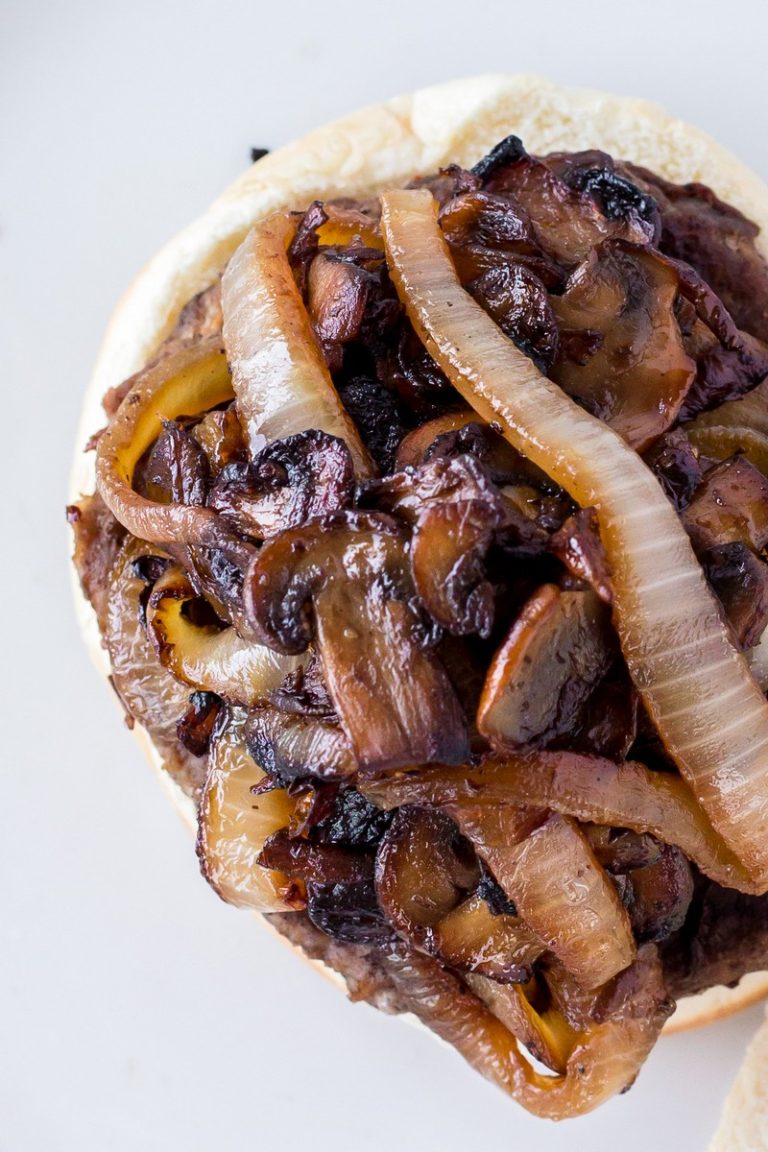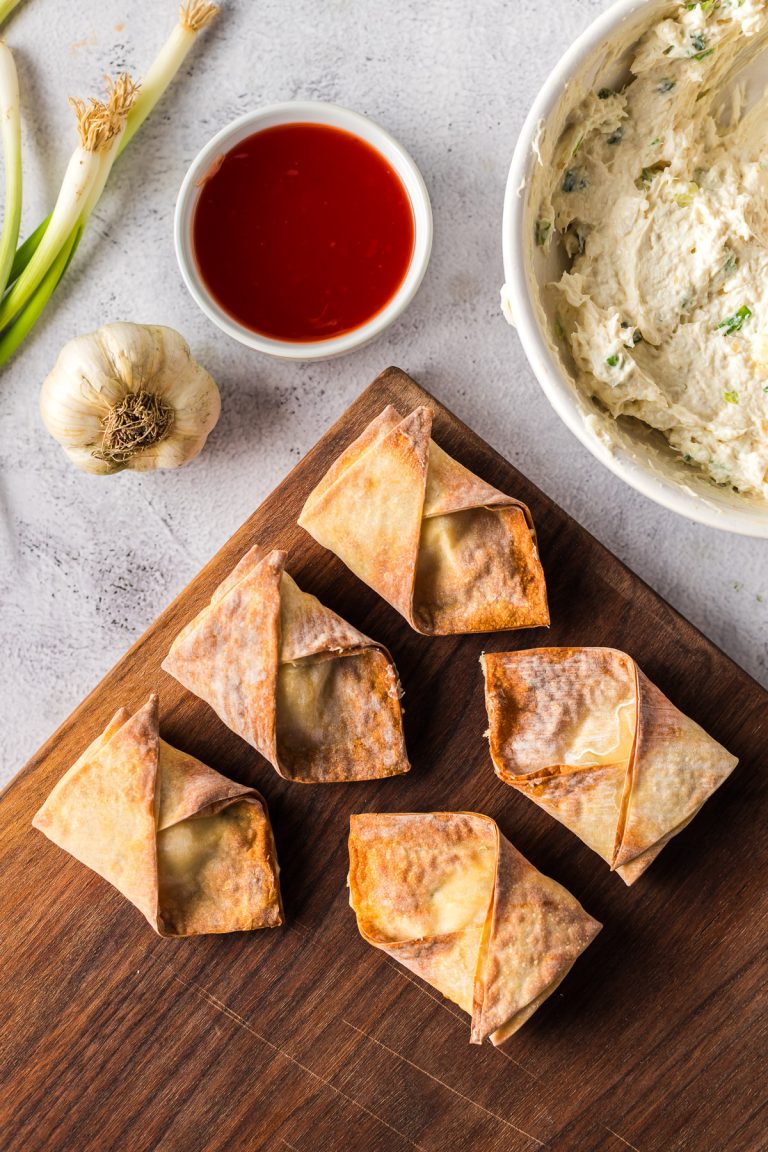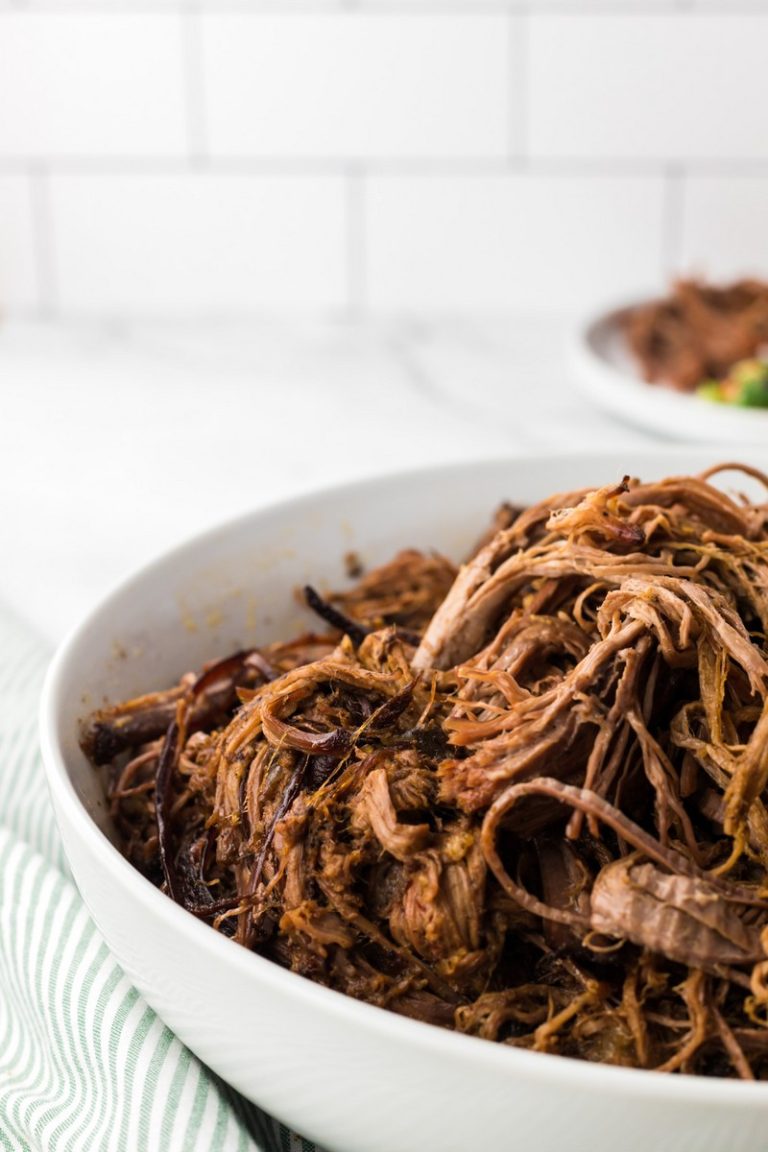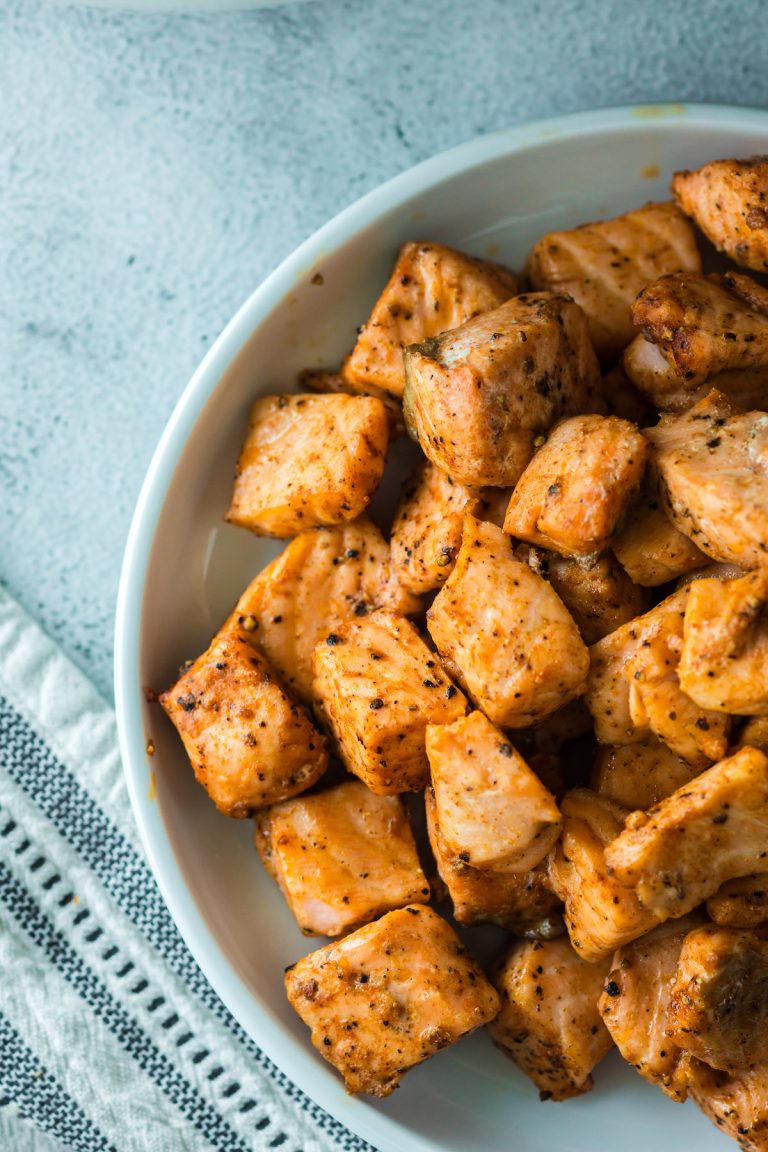If you’re a seafood lover, it’s time to upgrade your kitchen skills with this simple tutorial on how to remove salmon skin. Whether you’re a beginner home cook or already have experience with salmon, there’s tips for you!
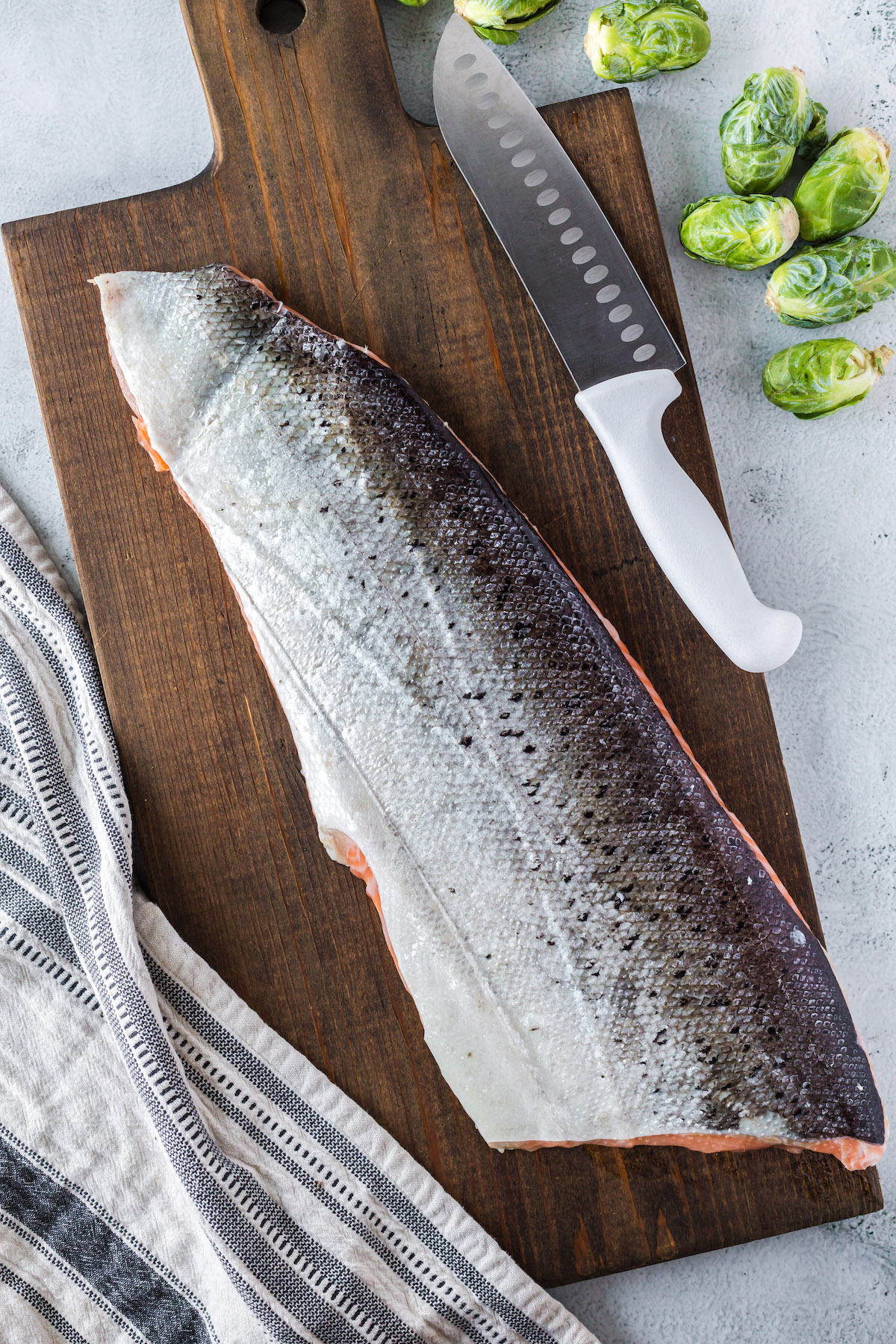
Salmon is one of my favorite proteins to make! It’s rich in heart-healthy fats, protein, and other beneficial nutrients. Unfortunately, the skin can sometimes be a sticking point for people. Some love it while others hate it!
Whether you’re preparing a delicate salmon filet, making air fryer salmon bites, or having an at-home sushi night, knowing how to take off salmon skin will take your food to the next level!
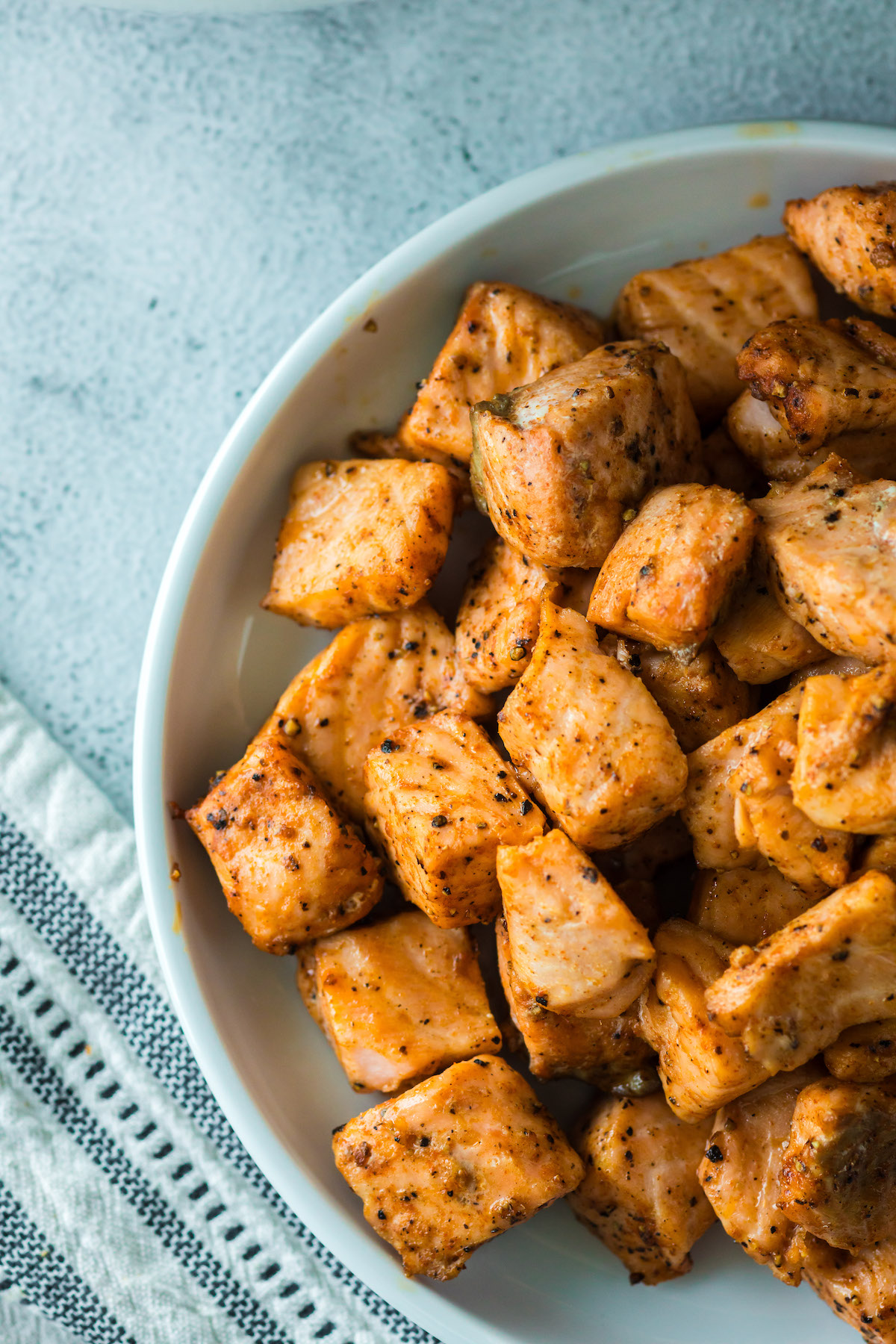
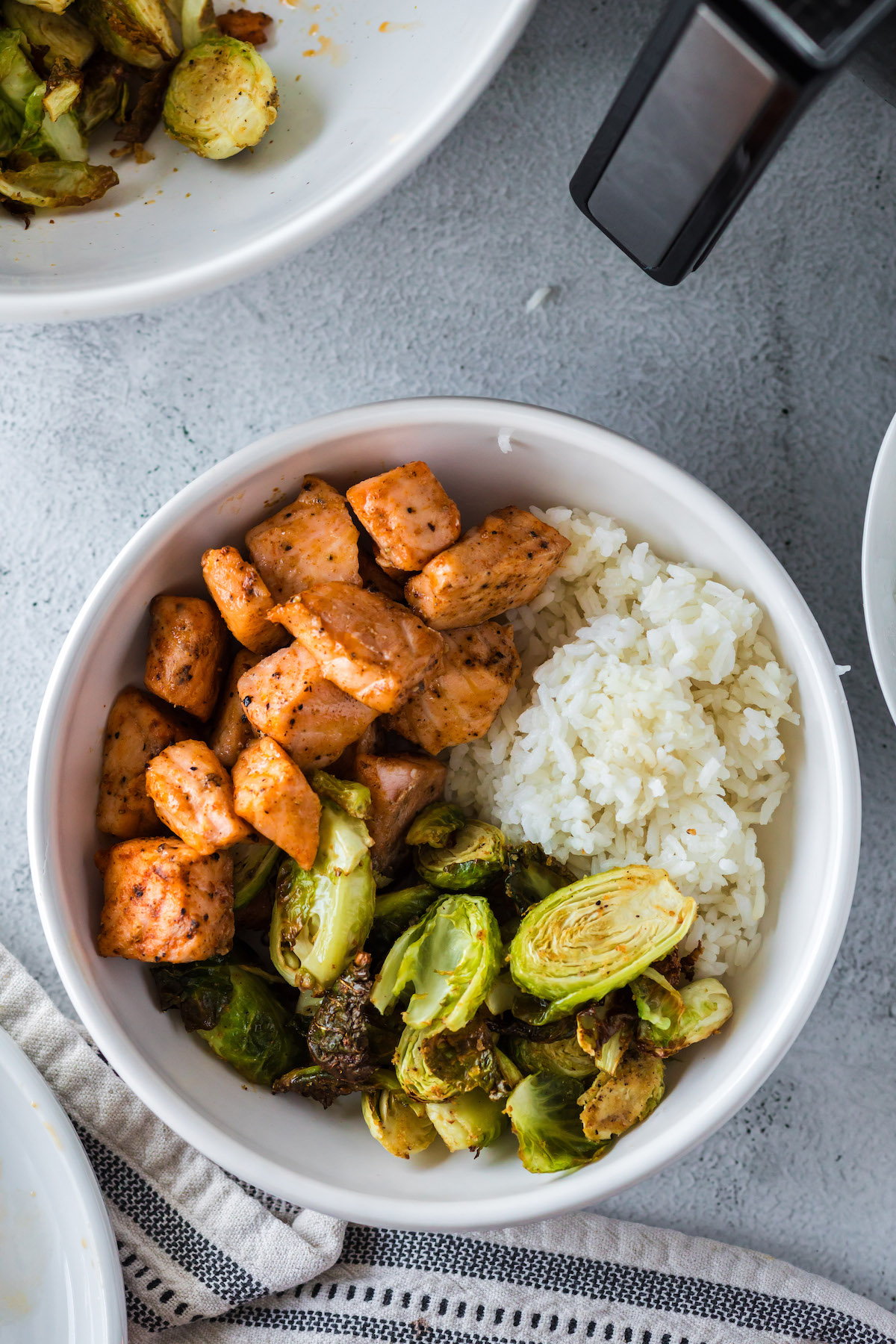
Why Remove Salmon Skin?
Salmon skin can be enjoyable if it’s crispy and well-seasoned, but there are certain instances where skinless salmon is preferred.
In recipes like salmon cakes, smoked salmon, or some types of sushi rolls, using skinless salmon is essential for the best taste and texture. It really comes down to personal preference, since some people only eat skinless salmon for its smoother texture.
Tools For Removing Salmon Skin
Before we dive into how to remove salmon skin, let’s first discuss the tools you’ll need:
- Sharp, flexible knife: A boning knife or a thin-bladed filet knife are both great choices for removing salmon skin. The design of these knives allows for precise control and a closer cut to the skin.
- A cutting board: It’s best to use a non-slip cutting board for safety and control. If you don’t have the right cutting board, place a wet towel underneath it to prevent slippage.
- Paper towels: Paper towels will help you firmly grip the salmon, which can be quite slippery. You want to prevent any kitchen mishaps here!
- Fresh salmon filet: It’s easier to remove the skin from a whole filet rather than individual portions, so I suggest starting there.
How To Remove Salmon Skin
Step 1: Prepare Your Workspace
Place your cutting board on a stable surface or over top a wet paper towel if necessary. Make sure your knife is freshly sharpened for an easier cutting process.
Step 2: Position The Salmon
Place the salmon filet on the cutting board, skin-side down. Make sure the tail end (the thinner side) is facing you. This position will give you better control when you start cutting.

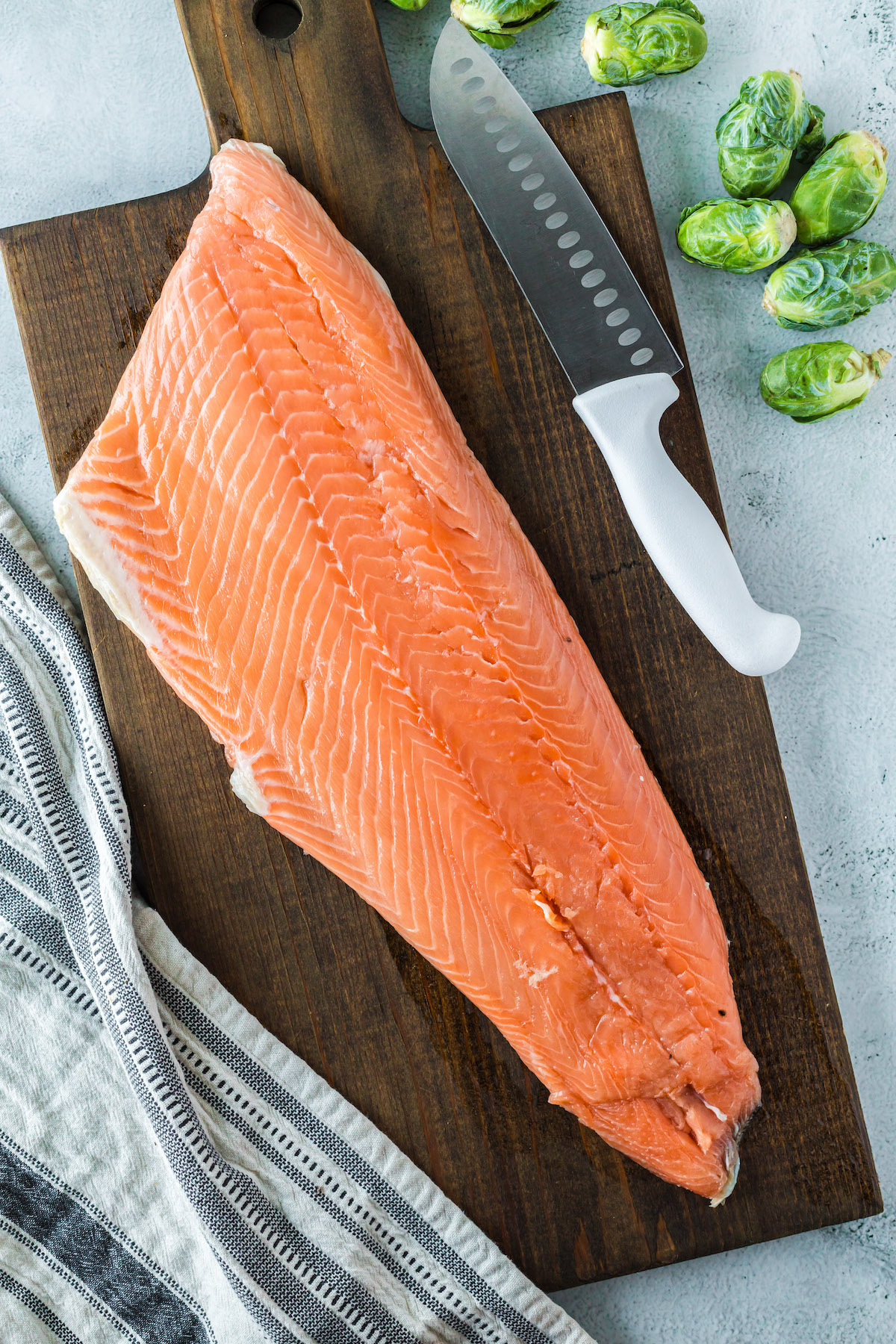
Step 3: Make The Initial Cut
Holding the tail end (you can use a paper towel for a better grip), make a shallow cut between the flesh and the skin about an inch in. Angle your knife slightly downward towards the skin, then start carefully sliding the knife along the length of the filet.

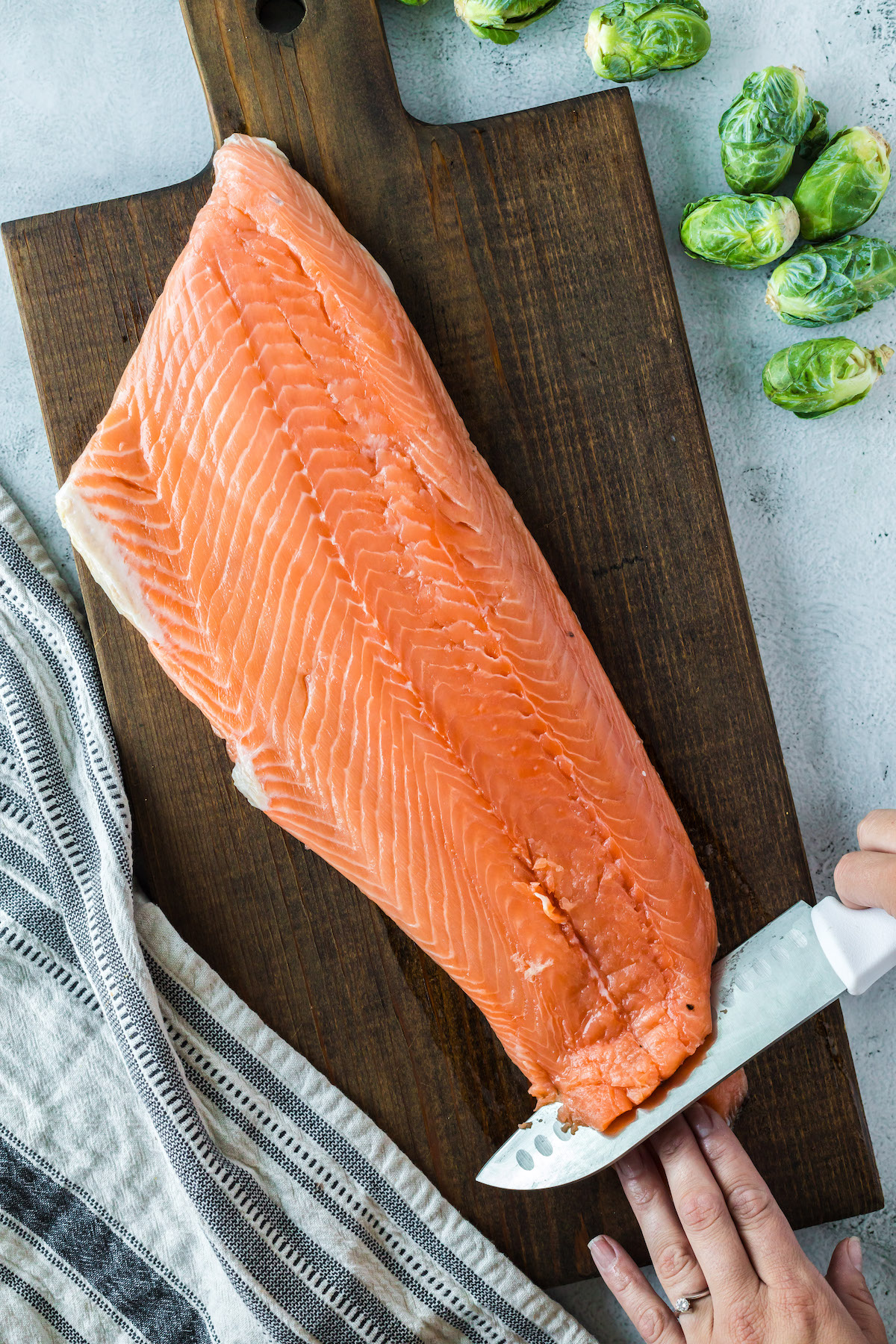
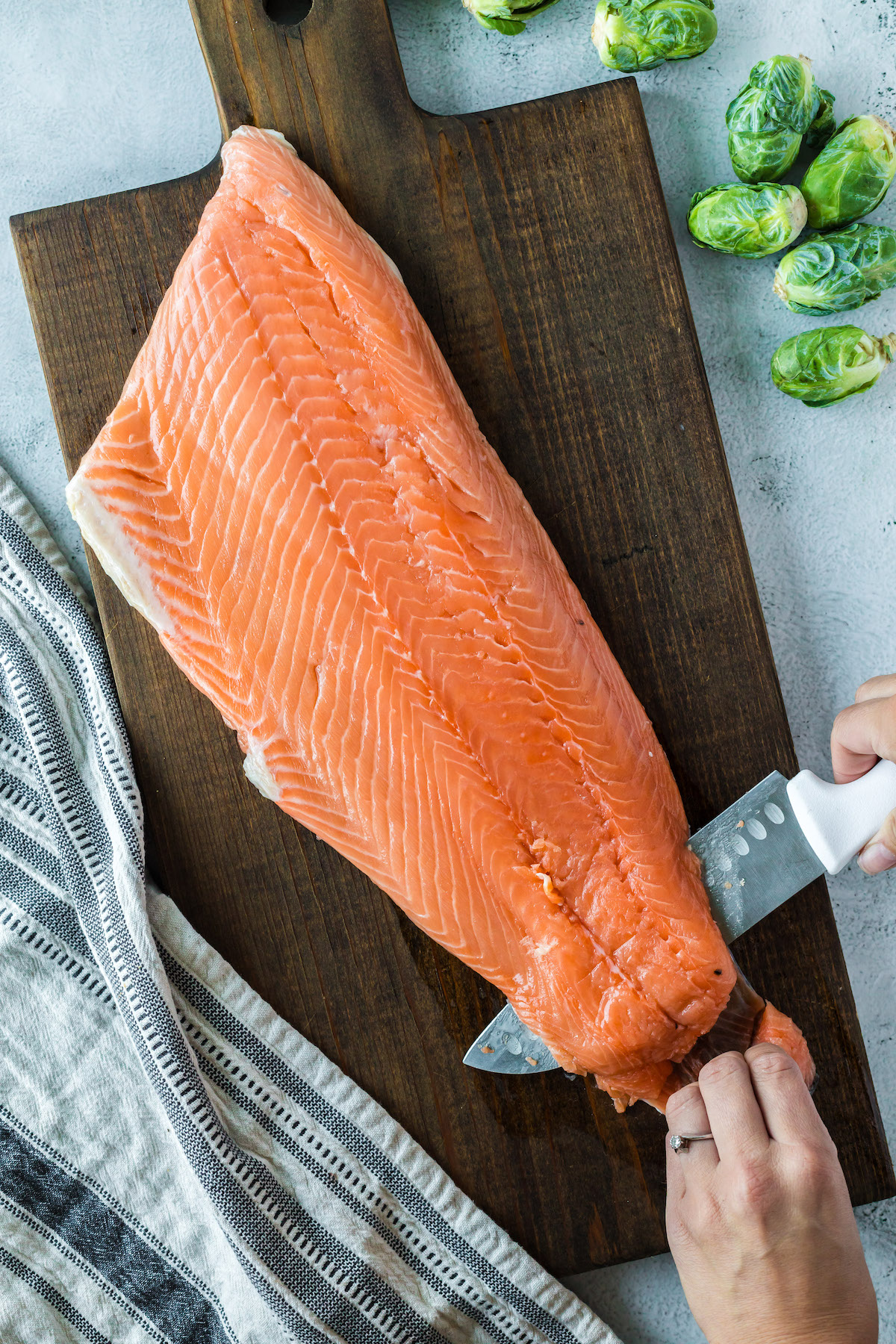
You can hold the skin tightly with your free hand (or a paper towel), and keep the blade as close to the skin as possible. Make sure to apply gentle pressure as you separate the flesh from the skin.
Step 5: Continue Separating The Skin
Keep moving your knife in a sawing motion, always pushing away from your body. Remember, to keep your knife angled slightly towards the cutting board and not upward into the flesh. The skin should start to peel away from the flesh as you continue slicing down.
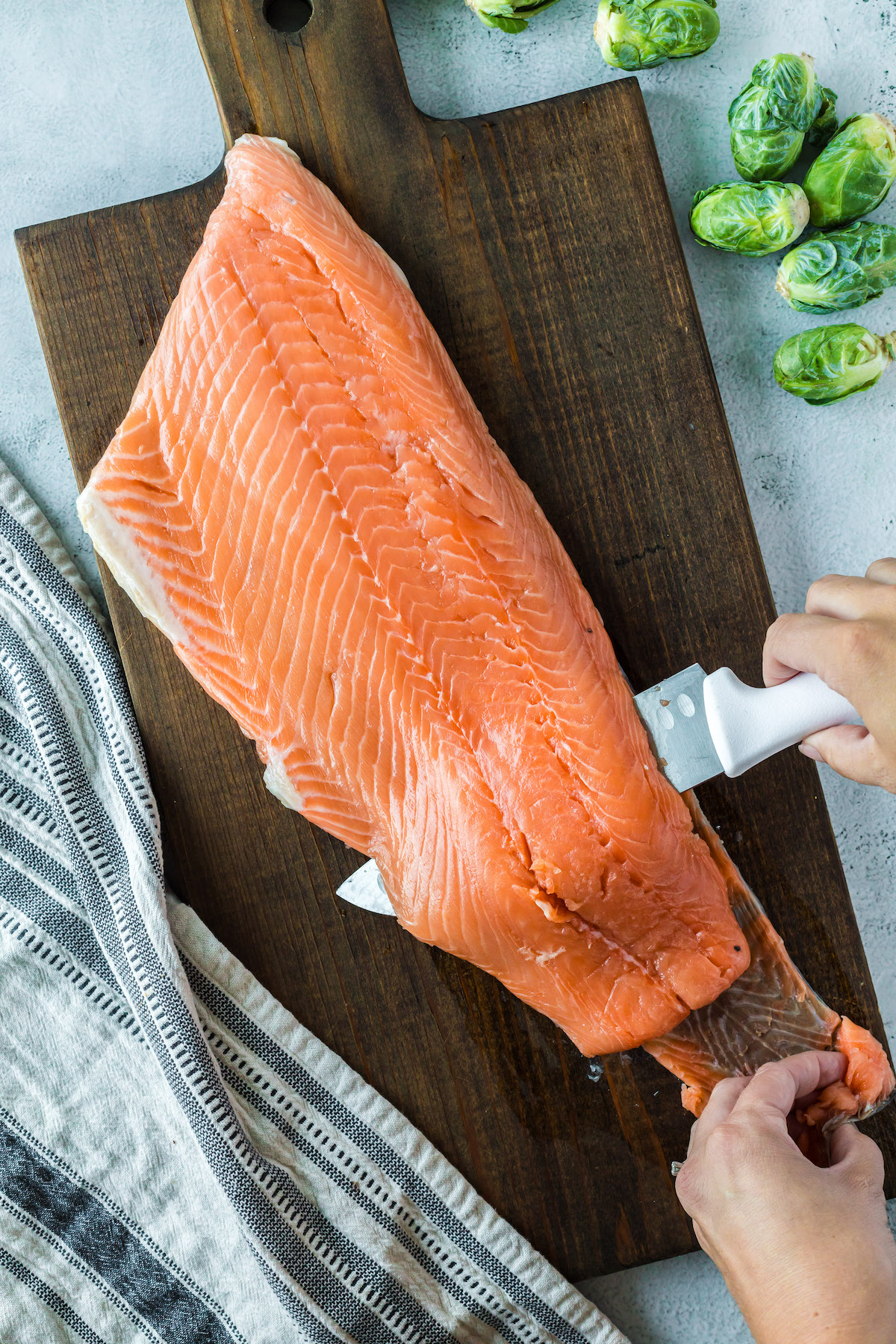
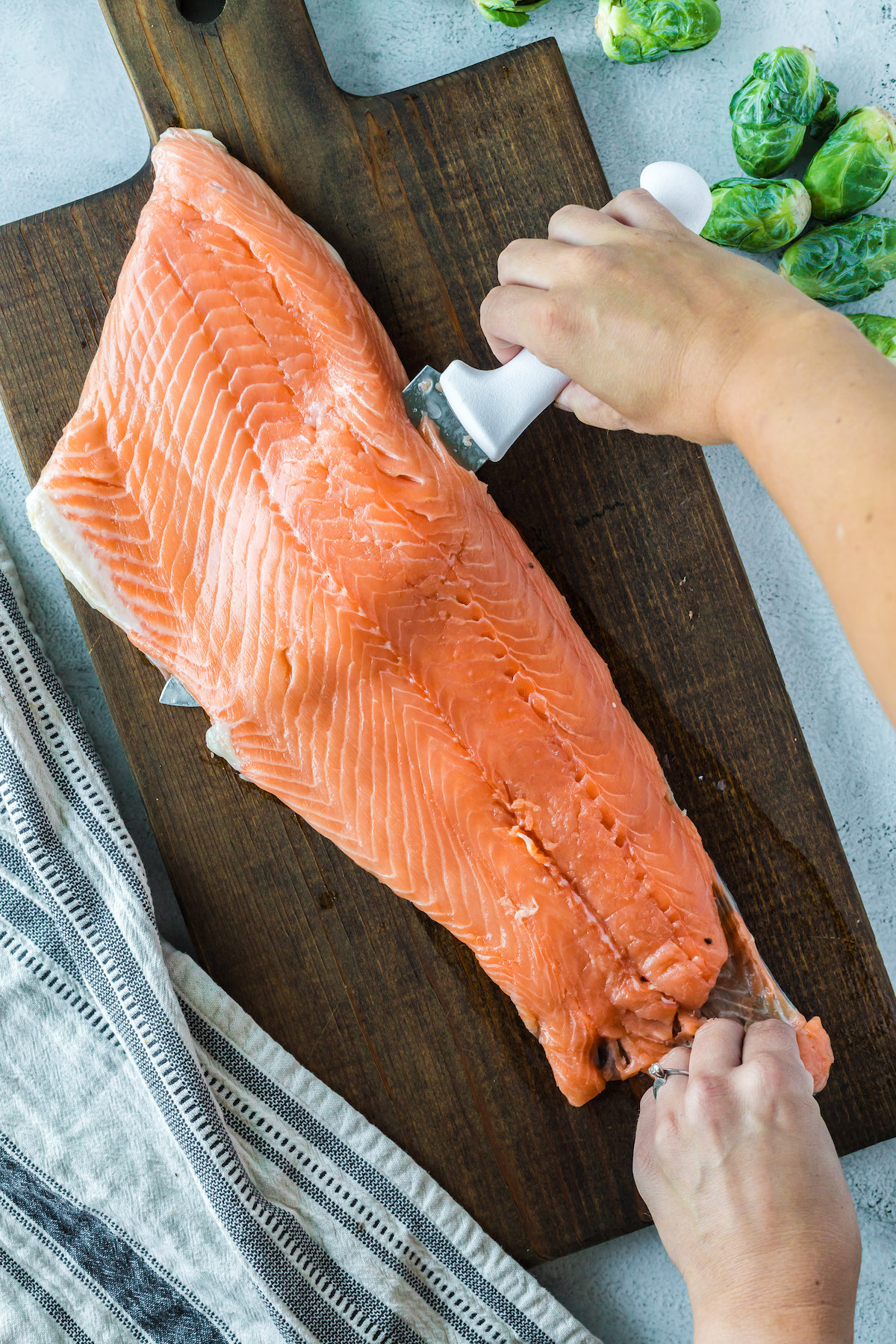
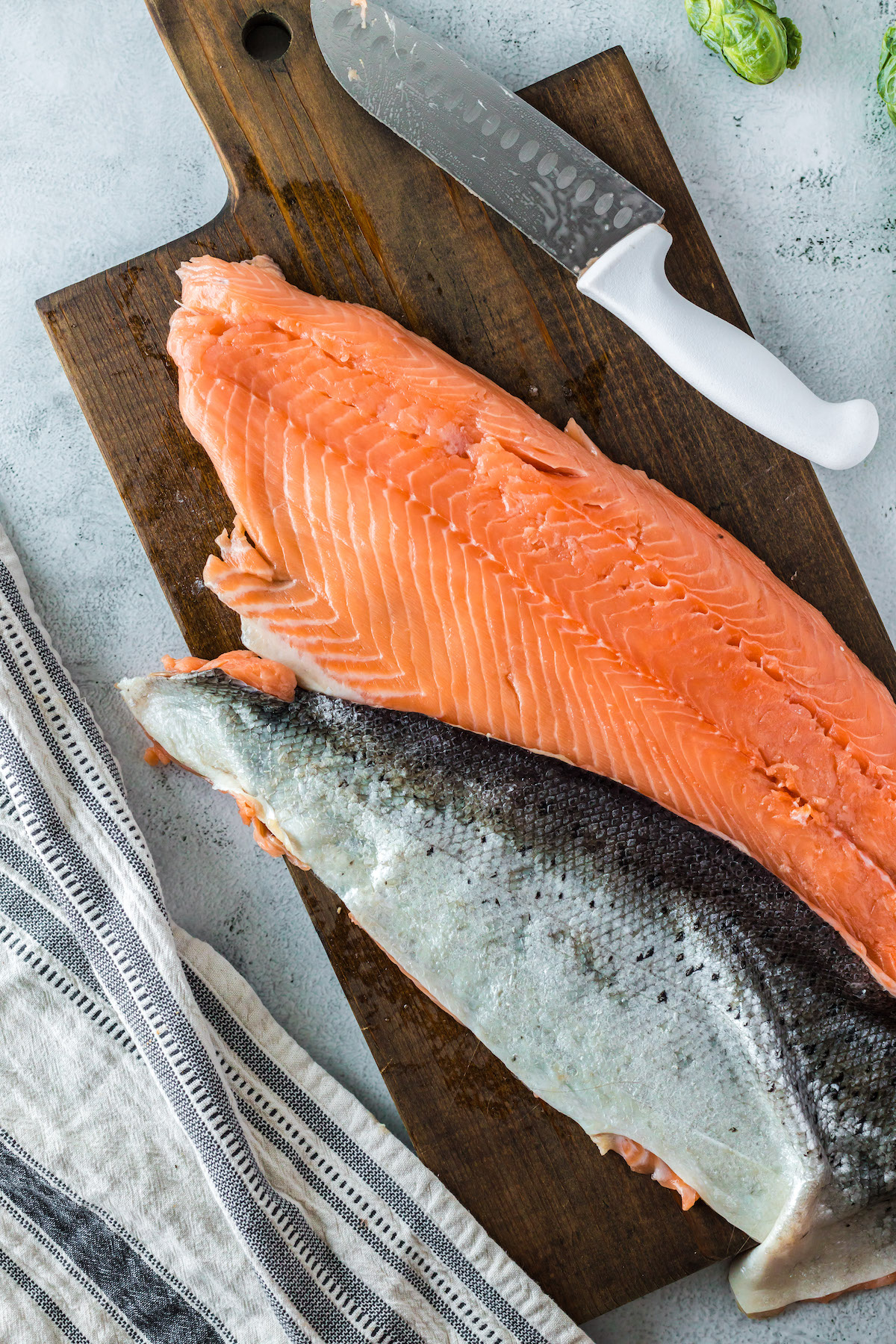
Step 6: Finish Up
Continue this slicing process until you’ve completely separated the skin from the salmon. If there are any pieces of skin left on the filet, you can carefully trim them off with your knife.
Step 7: Check Your Work
Once you’ve removed the skin, check the filet to ensure it’s clean and no small pieces of skin remain. Also, check the skin. Ideally, it should have minimal flesh still attached. This indicates that you’ve successfully separated the skin without wasting any of the precious salmon meat.

What To Do With Salmon Skin
Don’t throw away salmon skin after removing it! It is actually quite delicious when prepared properly. You can cook it until it’s crispy for a light snack or as a garnish on your favorite dishes.
All you have to do is season it with salt and pepper, place it skin-side down in a hot pan with some oil, and fry it until it’s crispy.
Tips For Removing Salmon Skin
If you want to become a pro at knowing how to take off salmon skin, keep these quick tips in mind:
- Use a sharp knife: Not only does a sharp knife make removing salmon skin easier, but it’s also actually safer to use. A dull knife can slip causing injuries much more often than a sharp one.
- Slow down: Take your time with the process to ensure you’re removing the skin without taking off too much flesh. You can always go faster as you get better at this technique.
- Practice: The more you practice, the better you’ll get! Don’t be discouraged if you’re not an expert after the first time.
Frequently Asked Questions
Can I eat salmon skin?
Of course! Salmon skin is edible and adds flavor and texture to dishes. If you decide to eat the skin, it’s best if your fish is sustainably farmed or wild-caught to reduce the risk of contamination.
Can I remove the skin after cooking the salmon?
Yes, you can remove the skin after cooking, but it’s often more challenging to do so. Usually, the flesh sticks to the skin during the cooking process, which is why removing it beforehand is preferred.
Can I use any knife to remove the skin?
Although I recommend a thin, flexible blade like a boning knife, it’s not 100% necessary. You can remove the skin using a chef’s knife or utility knife, too! The most important part is being comfortable and confident while holding it. If you really focus on the technique, you’ll have no issues.

